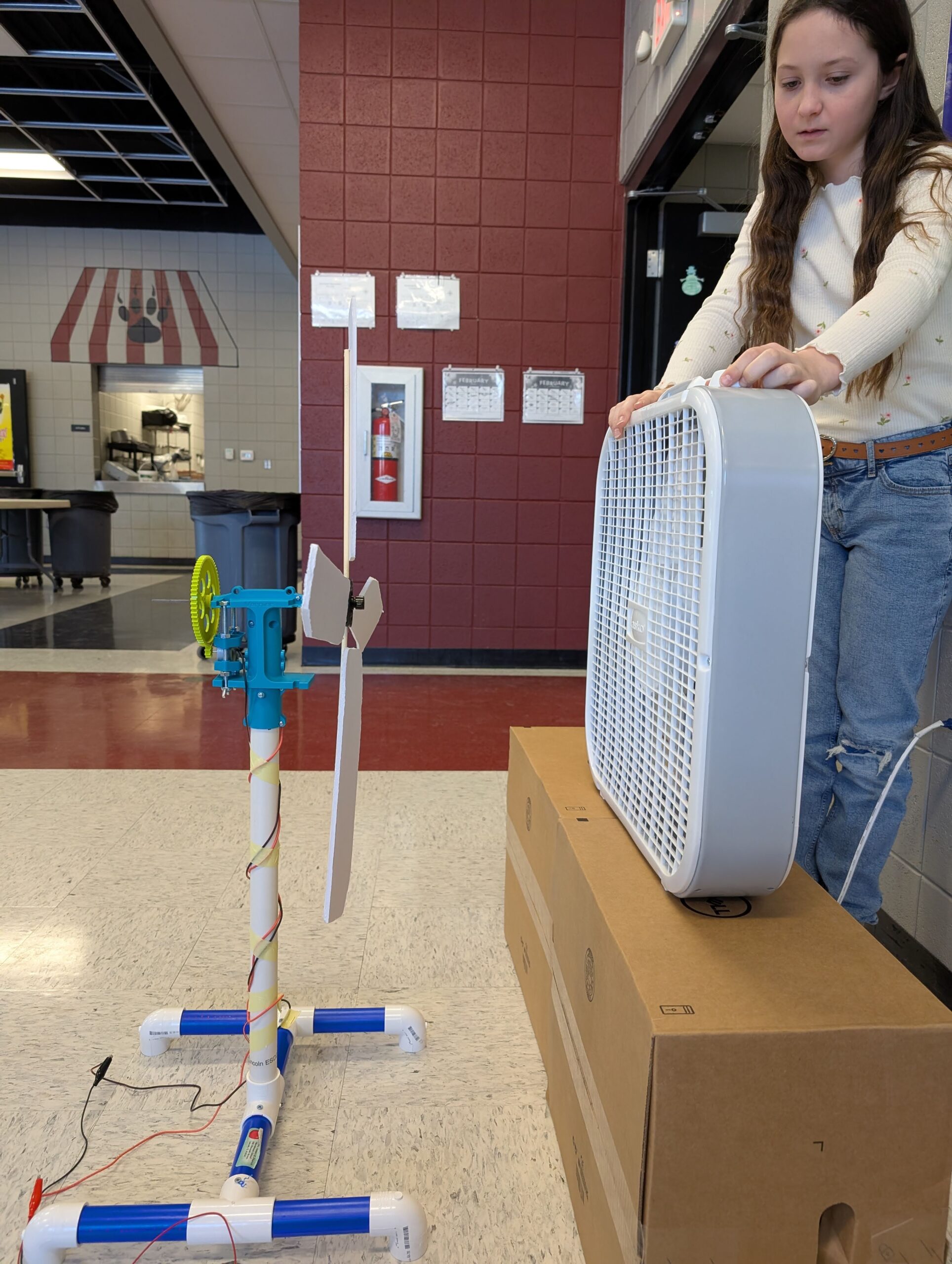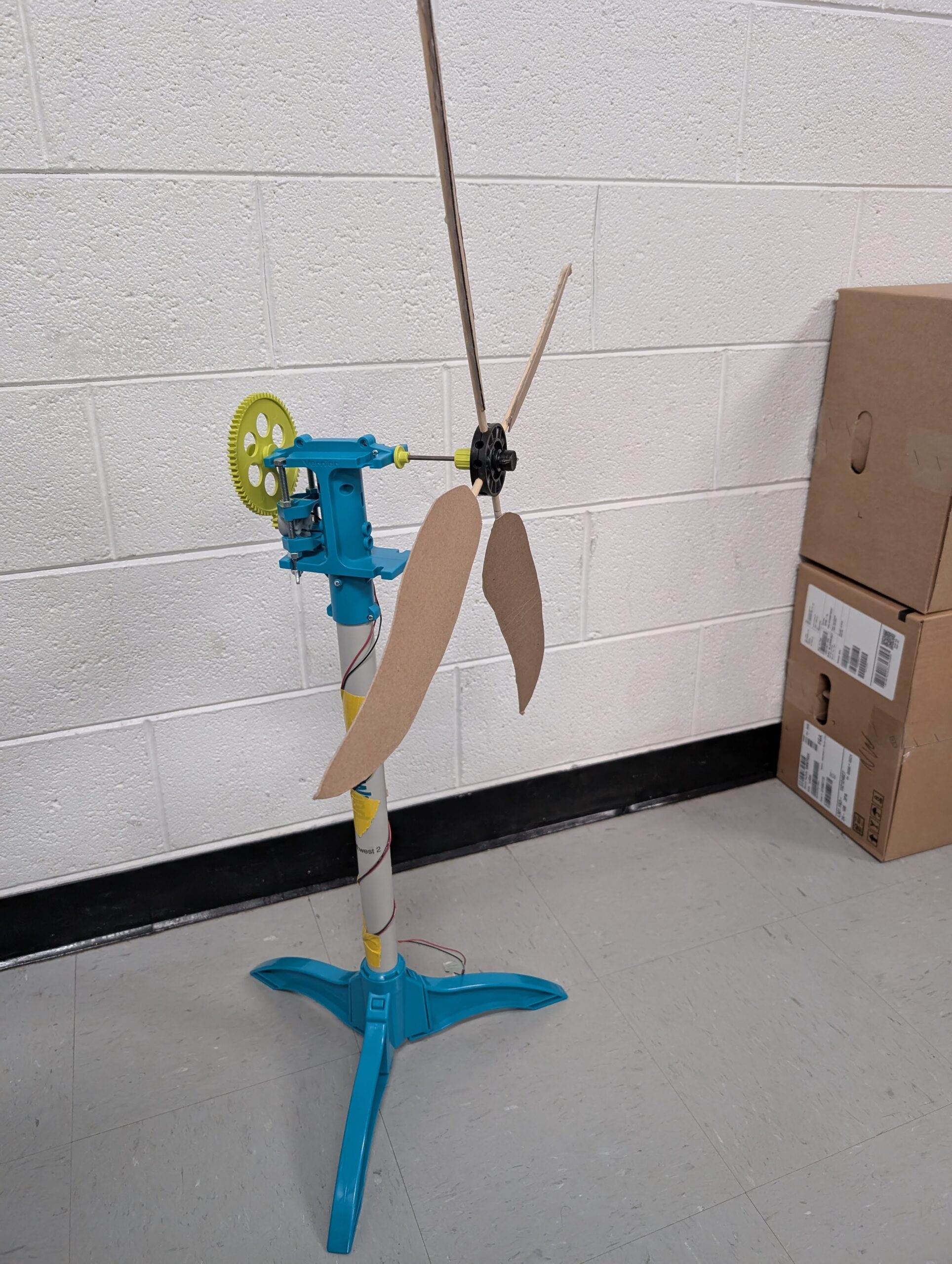Project Overview
Using your knowledge of how wind energy works, your team needs to build a small turbine to produce as much power as possible! Think about the best construction techniques and the most innovative design to make it operate. Entries will be evaluated based on performance as well as creativity, quality, and demonstrated knowledge.
Each team should have a coach to help them design, test, and upload their designs. Coaches can request materials through KidWind for their teams by contacting the Challenger Learning Center at CLC@heartland.edu.
We will ask you to submit a photo of your entire turbine taken straight on, featuring the blades and hub. Any other photos of blades close up, different angles, etc. can be added as well when you submit your project.
Teams will have the option to upload:
* Design Schematics
* Video Presentation
* Research Statement
* Lab Reports
* PowerPoint
* Video of Device running
Each is optional and not required.
Materials Required
Student Award
Submit Your Project

I’m a big fan of
Project Overview
NA



Central Airplanes
Project Overview
This project was submitted on 2/16. A student shared a presentation video with me this morning.

The Renewable Renegades
Project Overview
Our wind turbine was created using a lot of thought and outside of the box thinking. We used recycled PVC pipes to construct the base and tower which our generator sat atop. PVC pipes were also used to construct the blades to spin our generator and make electricity!
Video of Device Running

Team Turbulene
Project Overview
This turbine is made to show the great impact turbines have in the environment. As a group we decided that to show this by constructing a sustainable wind turbine with minimal waste (recycled PVC and plywood was utilized in the construction). This project helped to bring our group together and helped us to overcome any challenges we were faced with.
Video of Device Running
‘lil Orbiting Eagle
Project Overview
Our team, ‘lil Orbiting Eagles, created turbine blades from multiple materials to test voltage. We used the KidWind base, motor and hub. We attached our blades to the KidWind hub using dowel rods and hot glue. We measured the voltage using a multimeter and generated the wind from a standard box fan on the high setting.
Video of Device Running




Wind Wizards
Project Overview
We built a 4-bladed wind turbine out of cardboard and other things like paper. We changed and tested variables while building and some variables are pitch, material, and number, shape, and length. We chose the shape of our blades which is a rectangle.



Turning Turbines
Project Overview
Our turbine has three thin short cardboard blades. With paper on top, with pink, purple, and teal coloring for the design. The height was 33 and the length and width were 15.



Power Rangers
Project Overview
We built a windmill designed by us entirely with eight cardboard blades with a curve on the top. Each blade is connected to sticks with hot glue, and tape for support.
We covered the blades with funny doodles and designs.



Moosenadoes
Project Overview
Our turbine has three blades. The blades look like hatchets. They are made out of strong thin cardboard.



Theus (Thor and Zeus)
Project Overview
We are a team of four 5th graders who created four wind turbine blades.
We chose to use balsa wood after our classmates tested different blade pitches, sizes, and materials to see what made it spin the fastest. Our competition turbine used gears with a ratio of 64 to 8.
Video of Device Running





Wind Warriors
Project Overview
We are four 5th graders that built a wind turbine blades out of cardboard to catch the wind to spin and create electricity. After our classmates experimented with different blade shapes and pitches, we chose our blades to make it as powerful as possible. We added gears with a ratio of 64 to 8 to help.
Video of Device Running





Central Soldiers
Project Overview
Our team is a group of three 5th graders who designed four blades using foam board. We examined the results of different blade designs and pitches tested by our classmates to decide on our design. We used a gear ratio of 64 to 8 to improve how much power it makes.
Video of Device Running








Central Air Planes
Project Overview
We are a group of four 5th graders who built a wind turbine for the KidWind Competition from balsa wood to see how wind can be turned into electricity. We used our classmates data on blade size, shape, and pitch to choose our design. We also used a 64 to 8 gear ratio to make it spin faster and produce more power.
Video of Device Running




Windy Wildcats
Project Overview
We are a group of four 5th graders who used their classmates experiments with blade shape and pitch to determine our blade design. We used a Chomp Saw to cut four blades from cardboard. We also used a 64 to 8 gear ratio.
Video of Device Running




